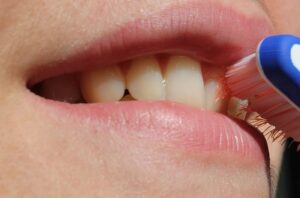First Aid Procedures: A Comprehensive Guide – In times of emergency, knowing the right first aid procedures can be a lifesaver. Whether you’re at home, work, or out in the wilderness, accidents can happen, and being prepared can make all the difference. In this comprehensive guide, we will walk you through essential first aid procedures, from minor cuts and bruises to more serious situations.
First Aid Procedures: A Comprehensive Guide
Introduction
Accidents can happen anywhere and at any time. Having a basic understanding of first aid procedures can mean the difference between life and death. This article will equip you with the knowledge you need to respond effectively in various emergency situations.
Assessing the Situation
Before you can provide first aid, it’s crucial to assess the situation. Ensure your safety and the safety of others. Check for any immediate dangers, such as fire, traffic, or unstable structures. Once you’ve determined it’s safe, approach the injured person cautiously.
Calling for Help
In most emergencies, it’s essential to call for professional medical assistance. Dial emergency services immediately and provide them with all the necessary information, including your location and the nature of the injury.
CPR (Cardiopulmonary Resuscitation)
Cardiopulmonary resuscitation, commonly known as CPR, is a life-saving technique used when someone’s heartbeat or breathing has stopped. It consists of chest compressions and rescue breaths. Let’s break down the steps:
Recognizing Cardiac Arrest
Look for signs of unresponsiveness, absence of breathing, and the absence of a pulse. If you observe these signs, initiate CPR.
Performing Chest Compressions
Place the heel of your hand on the center of the chest and push hard and fast. Perform chest compressions at a rate of 100-120 per minute, allowing the chest to fully recoil after each compression.
Providing Rescue Breaths
After 30 compressions, provide two rescue breaths. Ensure that the chest rises with each breath. Continue CPR until professional help arrives.
Choking
Choking can be a frightening experience, but knowing how to respond is crucial. If someone is choking and cannot cough, breathe, or speak, perform the Heimlich maneuver.
Bleeding and Wound Care
Proper wound care is essential to prevent infection and promote healing. For minor cuts and scrapes, clean the wound with soap and water, apply an antibiotic ointment, and cover it with a sterile bandage. For more severe bleeding, apply direct pressure to the wound with a clean cloth or bandage.
Burns and Scalds
Burns can vary in severity, and their treatment depends on the degree of the burn.
First-Degree Burns
First-degree burns are superficial and typically result in redness and pain. Run cool water over the burn and apply a burn ointment.
Second-Degree Burns
Second-degree burns are deeper and may form blisters. Follow the same steps as for first-degree burns, but be cautious not to pop the blisters.
Third-Degree Burns
Third-degree burns are the most severe and require immediate medical attention. Do not attempt to treat these burns yourself.
Fractures and Sprains
In cases of fractures and sprains, immobilization is key to prevent further injury.
Immobilizing a Fracture
Use splints or improvised materials to immobilize the injured area. Keep the injured limb still and elevated.
RICE Method for Sprains
Rest, Ice, Compression, and Elevation (RICE) is the recommended treatment for sprains. Give the injured area time to heal and reduce swelling.
Heat-Related Emergencies
Heat-related illnesses can be life-threatening if not addressed promptly.
Heat Exhaustion
If someone shows signs of heat exhaustion, move them to a cooler place, provide fluids, and loosen clothing.
Heat Stroke
Heat stroke is a medical emergency. Move the person to a cooler place, cool them down with water, and seek immediate medical attention.
Hypothermia and Frostbite
Cold weather can lead to hypothermia and frostbite, which require specific treatments.
Recognizing Hypothermia
Look for shivering, confusion, and slurred speech. Gradually warm the person with blankets and warm drinks.
Treating Frostbite
Soak the affected area in warm (not hot) water to thaw the tissue slowly. Do not use direct heat sources.
Allergic Reactions and Anaphylaxis
For severe allergic reactions and anaphylaxis, administer an epinephrine auto-injector if available and seek immediate medical help.
Poisoning
Poisoning can occur through ingestion, inhalation, or skin contact.
Swallowed Poisons
Do not induce vomiting unless instructed by a medical professional. Seek immediate medical attention.
Inhaled Poisons
Move to fresh air immediately and call for help.
Skin Contact with Poisonous Substances
Flush the affected area with water for at least 15 minutes.
Seizures
During a seizure, protect the person from injury by moving objects out of the way and placing them on their side. Do not put anything in their mouth.
Insect Stings and Bites
Remove any visible stingers or ticks, wash the affected area, and apply an ice pack to reduce swelling.
Conclusion
Being prepared with knowledge of first aid procedures can make a significant difference in emergency situations. Remember to stay calm, assess the situation, and call for professional help when necessary. Your actions can save lives.
FAQs (Frequently Asked Questions)
- How can I remember all these first aid procedures?
- Consider taking a first aid and CPR certification course to gain hands-on experience and knowledge.
- When should I use an epinephrine auto-injector for allergic reactions?
- Use it if the person experiences severe symptoms such as difficulty breathing or a swollen throat.
- Can I apply a tourniquet for bleeding control?
- Tourniquets should only be used as a last resort for life-threatening bleeding that cannot be controlled by other means.
- Is it safe to give water to a person having a seizure?
- No, do not give water or anything to ingest during a seizure. Ensure their safety by moving nearby objects instead.
- How do I properly disinfect a wound in the wilderness?



